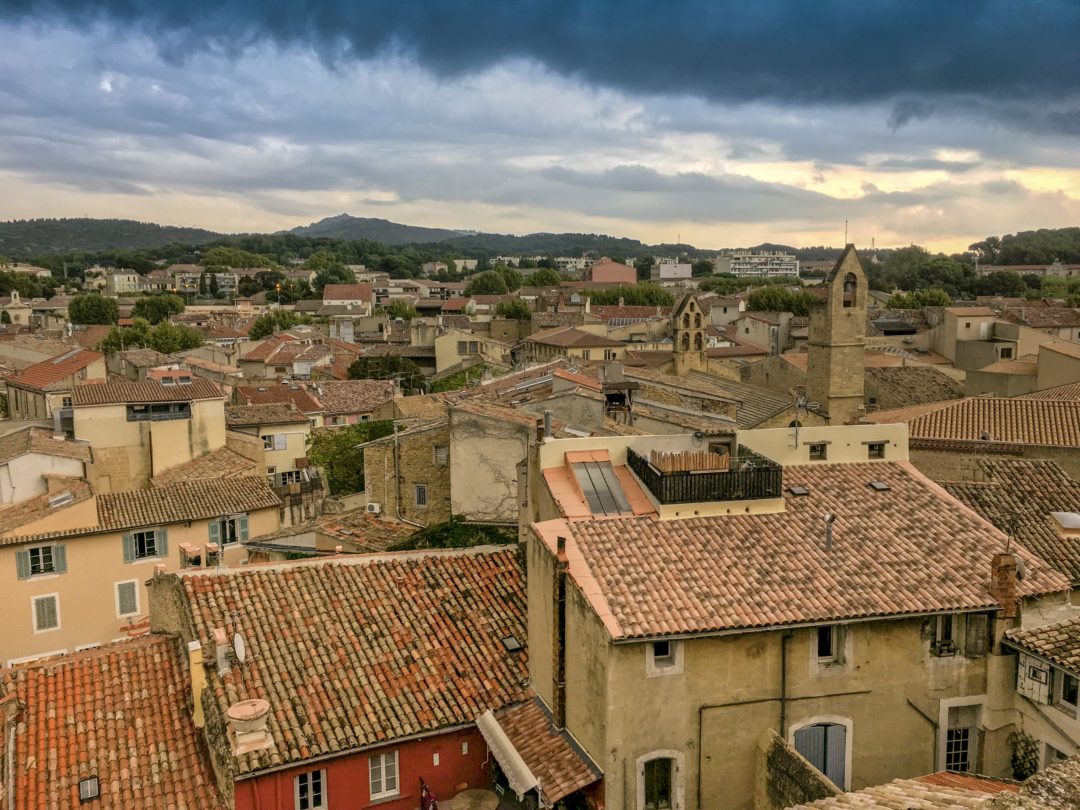We hope you love the small and beautiful Salon-de-Provence as much as we do! Check out the office of tourism website for information on things to do. We have included some things below that you might want to check out!
Things to do in Salon-de Provence
Chateau de l’Empéri
The Château de l’Empéri is a 9th-century castle built on the rock of Puech, which sits in the middle of Salon-de-Provence. The castle was the residence of the archbishops of Arles as well as the Holy Roman emperors. It is from the latter that the castle derives its name. In 1481, the Chateau came under the power of kings of France. Several kings and queens of France have stayed at the Chateau, including Francis I and his court as well as Louis XIV. In 1660 Catherine de’ Medici came to Salon de Provence to consult Nostradamus, the famous astrologer.
Arranged and embellished during the 15th and 16th centuries, it was used as jails and barracks after the French Révolution. Its buildings were restored in 1926 and the Chateau de l’Empéri now hosts a museum of Art and History Military.
The Marius Fabre Soap Factory
In 1900, Marius Fabre founded his soap company in Salon de Provence. Today, the fourth generation of his family is carrying on the tradition of real Marseille soap with the same passion. This traditional know-how, handed down through generations in our family, guarantees that Marseille soap has kept its peerless quality over centuries.
To book a guided tour in English, please call this number : +33 (0)4 90 53 82 75
Fontaine Moussue (Mossy Fountain)
Considered the “mascot” of the town, the Fontaine Moussue (Mossy Fountain) was originally built in the 16th century and is a prominent place for walks and gatherings. The current Fontaine was built by the sculptor Maurice Bernus in 1775.
The fountain’s two basins have been welded together by limestone concretions and are topped by moss and other plant life that give the fountain its unusual shape. The larger Fontaine Moussue is decorated with four masks which spout water and is framed by four lions’ heads. The smaller Fontaine Moussue, located on Place Louis Blanc, has a crown decorated with mouldings. The fountain gets its water from the Font de Maïre spring, which has fed all the town’s fountains since the Middle Ages.
St Michel Chapel
Built during the 13th century, this chapel boasts a remarkable Romanesque tympanum featuring the paschal lamb.
Maison de Nostradamus
The Museum is located in the house where Nostradamus (1503 – 1566) lived from 1547 until his death and where he wrote his famous “Prophecies”. Discover this multi-faceted man who was engaged in Medicine, Pharmacy, Astrology, and Humanism at this museum. An audio tour of 40 minutes (10 scenes) will allow you to discover the life of this illustrious man and his scientific and philosophical works. The Museum also features temporary exhibitions, a bookshop and a collection of documents.
Open from Monday to Friday from 9h to 12h and from 14h to 18h (except some holidays). Saturday and Sunday from 14h to 18h.
Restaurants in Salon-de-Provence

Please remember that most restaurants in France are only open for lunch from around 12-2 PM and dinner from 7-9 PM. We advise to plan accordingly as it can be difficult to find food outside of these times. We strongly highly recommend making a reservation for dinner as most restaurants require them. Food and drink in Salon-de-Provence are very affordable.
Here are some restaurants we recommend:
- Abbaye de Saint Croix
Our wedding venue has a fabulous kitchen that serves great dinners and lunches.
Price: €45 – €60 prix fixe (3 course meal)
Phone: +33 4 90 56 24 55
- La salle a manger
We ate here and it was delicious! Cody had the boar three ways.
Price: €40 (two course meal)
Phone +33 4 90 56 28 01
- Le Salon Des Gourmets
Price: €40 (two course meal)
Phone: +33 4 88 43 79 29
- La Table Du Roy
Price: €31 prix fixe (3 course meal)
Phone: +33 4 42 11 55 40
- Restaurant l’Estive
Price: €31 (two course meal)
Phone: +33 4 90 42 05 95
- Domaine de roquerousse
Price: €30 prix fixe (2 course meal)
Phone: +33 4 90 59 50 11
You can find many more options for restaurants on the Salon-de-Provence Tourism Office website as well.
History of Salon de Provence
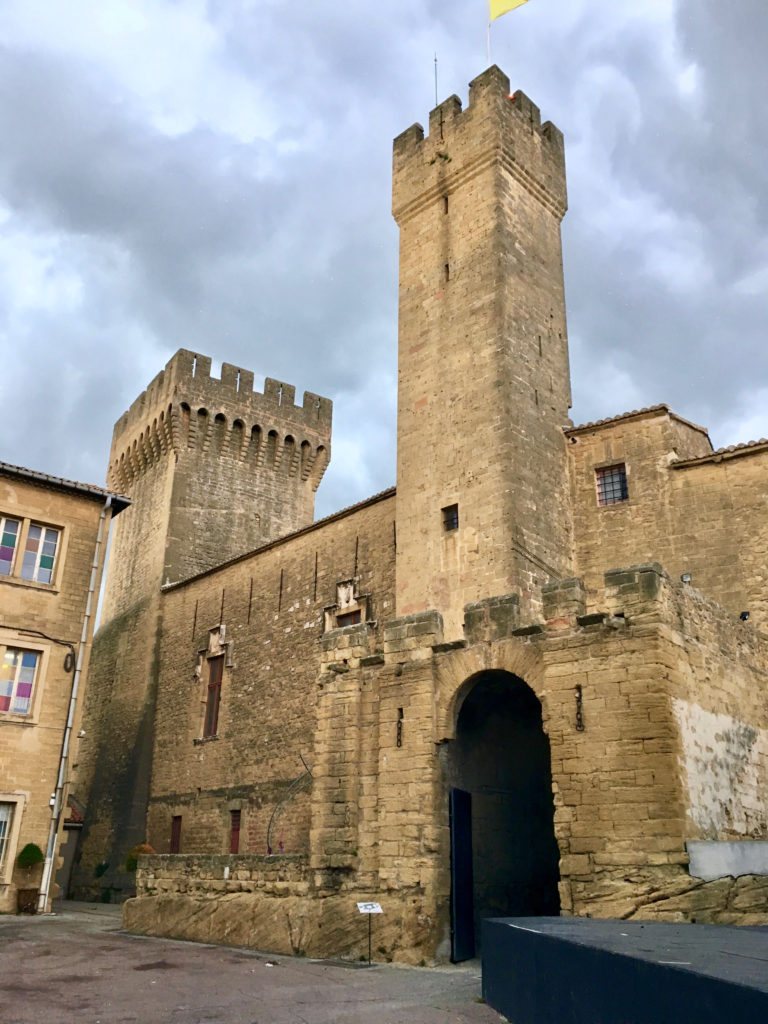
The areas around Salon-de-Provence have been populated for more than two thousand years. During the prehistoric period, Salon-de-Provence was occupied by the Salyens, who were sheep farmers and salt miners. Around 125 BC, the Romans dried the swamps around Salon-de-Provence and built a fortified military camp nearby, which became an important stop on the Via Aurelia. A local population settled around this fort.
In medieval times, the Villa Sallonne was part of the Holy Roman Empire, which explains why the castle in Salon-de-Provence is called Emperi. The emperors delegated their power to the Archbishops of Arles who become the lords of Salon. It wasn’t until 1404 that the city was officially recognized as a municipal organization.
During the 15th century, Salon-de-Provence experienced an economic boom while being ruled by the Counts of Provence, including the famous “Good King René”. However, following the death of King René in 1481, Provence was formally attached to the kingdom of France. During the sixteenth century, Salon-de-Provence, as did the whole of France, suffered from religious wars.
In Salon-de-Provence, two strong personalities stood out. In 1547, Michel de Nostredame moved to “Sallon de Crau” and wrote his famous “Prophecies”. In 1564, Salon welcomed Charles IX and his mother Catherine de Medici. On this occasion, the king granted the city a new coats of arms featuring a black leopard on a bright yellow background holding a shield with the fleur de lys, which remains the coats of arms and symbol of the city today.
In the 18th century, silk manufacturers were first established in Salon. In the 19th century, Salon-de-Provence enjoyed a real economic boom with the start of the industrial revolution. Many soap factories were built and the city was rich with trade in oils, soap, and coffee. Many mansions and castles were built during this period. Today, two soap factories are still active and trade still holds a prominent place in Salon. Since 1938, the city has been home to the Air Force Academy (Ecole de l’Air) and is a lively place for tourism.
This text has been modified from the Salon-de-Provence tourist page.
The Environs
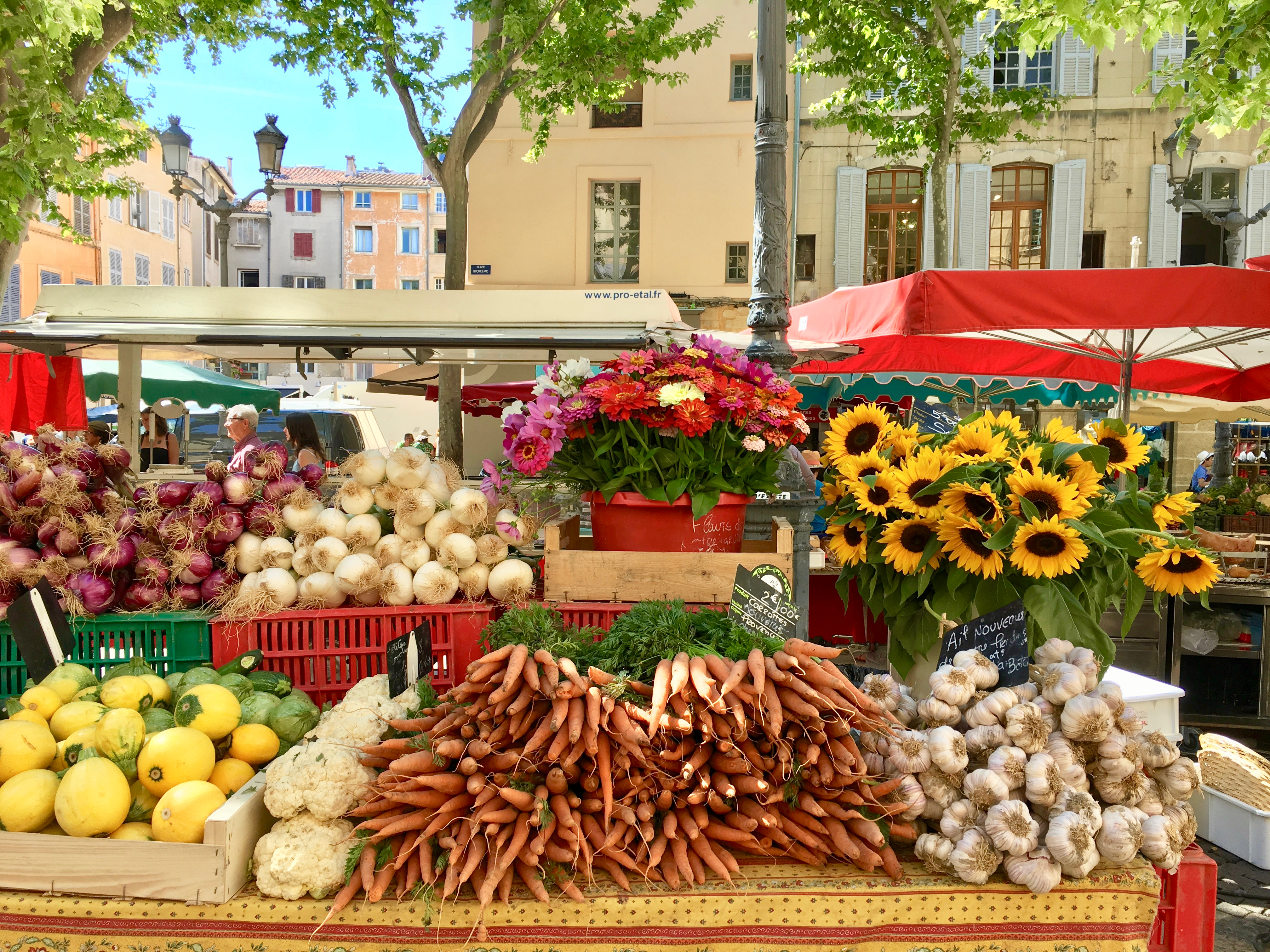
Towns and Cities
Aix-en-Provence (30 min from Salon-de-Provence)
A pocket of left-bank Parisian chic deep in Provence, Aix (pronounced like the letter X) is all class: its leafy boulevards and public squares are lined with 17th- and 18th-century mansions, punctuated by gurgling moss-covered fountains. Haughty stone lions guard its grandest avenue, cafe-laced cours Mirabeau, where fashionable Aixois pose on polished pavement terraces, sipping espresso.
While Aix is a student hub, its upmarket appeal makes it pricier than other Provençal towns. Aix has been a cultured, high-IQ sort of spot since Good King René had it as his 15th-century Provençal capital, bringing in artists, lawyers and nobles. They’ve kept on coming. Zola spent his youth in Aix as, more noticeably, did Paul Cézanne, a local lad. In 2004, Cody studied abroad in Aix, adding to the prestigious lines of notables that lived in the region.
Aix-en-Provence was formally founded by the Roman empire due to the presence of many natural springs and the city today is still strongly tied to water, with multiple natural fountains throughout the old town.
This text has been modified from the Lonely Planet and The Telegraph.
Cassis (1+ hour from Salon-de-Provence)
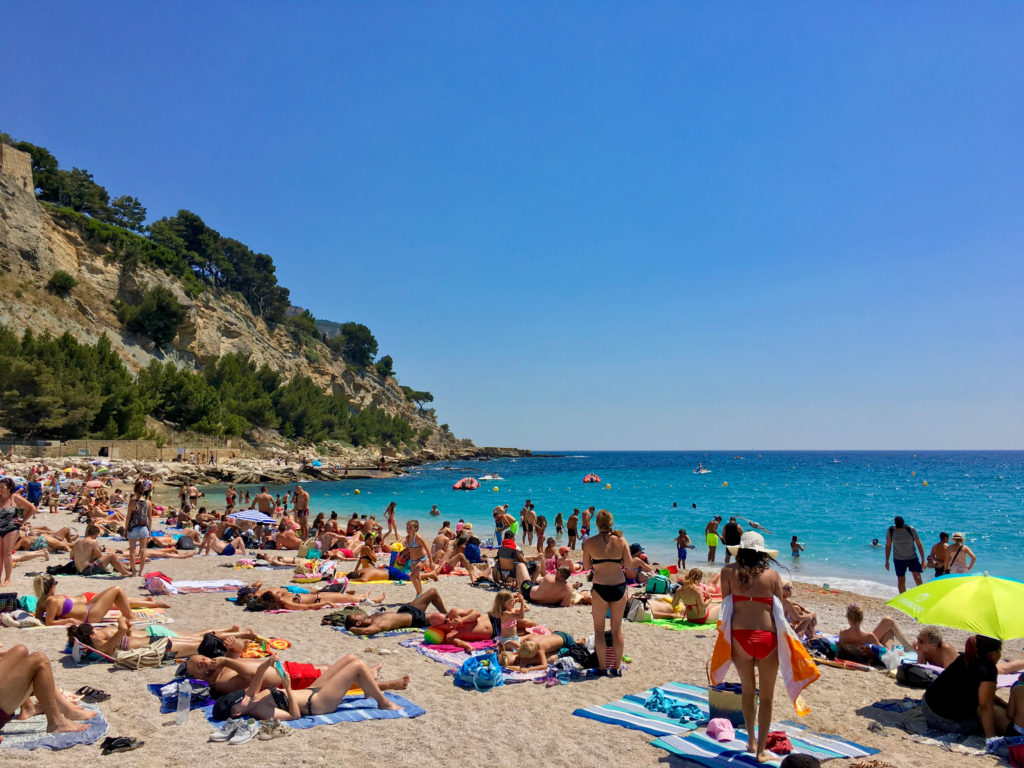
“In France, locals roll their eyes at crowded, touristy St.-Tropez—but they flock to Cassis, a tiny Mediterranean fishing port known for its clay-color buildings, rosé-producing vineyards, pebbly beaches, and affable locals, who, despite not speaking a word of English, are delighted to befriend any visitors who pass through their beloved village…” Read the entire review on Vogue.
Avignon (45 minutes from Salon-de-Provence)
The capital of Christendom in the 14th century, Avignon remains a treasure trove of architecture. Avignon charms visitors with its ancient streets, restored medieval ramparts and the immense Gothic architecture of the Palais des Papes.
Capital of the Vaucluse and the Côtes du Rhône, seat of the popes and city of art and culture, theatre, cinema, museums, big stores and little shops, Avignon is a small city that has everything a big one has, and then some.
From medieval streets and houses to private mansions from the Renaissance, passing through all its old and enticing squares, some no bigger than a tiny lane. And there are diverse dining opportunities, ranging from family-run restaurants, good and inexpensive to some of the greatest Michelin-starred chefs.
The region is also home to the world renowned Châteauneuf-du-Pape AOC. In addition, multiple other AOC’s surround the region, including Côtes du Rhône Villages, Vacqueyras, and Crozes-Hermitage. These are some of the groom’s favorite appellations for reds.
This text has been modified from the Trip Advisor and the tourism website for Avignon.
Gordes (45 minutes from Salon-de-Provence)

Built on the foothills of the Monts of Vaucluse, facing the Luberon, Gordes is one of the most well-known hilltop villages in the region, and one of the most beautiful in France. Its houses and buildings of white stone root themselves into the sharp cliff of the mountain, its labyrinth of “calades” (narrow cobblestone streets) charm all its visitors. Many artists have stayed in the village of Gordes and have contributed to its fame. Some, such as André Lhote, Marc Chagall, Victor Vasarely and Pol Mara came to stay. Its views are unparalleled.
This text has been modified from the tourism website for Avignon and Provence.
St-Remy-de-Provence (40 minutes from Salon-de Provence)
Ravishing St-Rémy is about as cultured and chi-chi as Provence gets, and yet somehow – and in stark contrast to some of the flashier coastal towns (St-Tropez, we’re looking at you) – it’s managed to cling on to its heart and soul during the gentrification process. Built from honey-coloured stone, and centred on a lovely, plane-shaded square lined by cafes, St-Rémy is a favourite summer haunt of the jet-set. The cobblestone streets, small boutiques, and easily walkable town make Saint-Rémy-de-Provence an incredible places to retreat to.
This text has been modified from the Lonely Planet and Bon Traveler.
Baux-de-Provence (40 minutes from Salon-de Provence)
Set in the heart of the Alpilles, Les Baux-de-Provence is a listed heritage site that has won titles including “one of the Most Beautiful Villages in France”. The essence that gives Provencal villages their very special atmosphere and fragrance is here too – small squares, well-shaded terraces, narrow streets and small shops. While in the village, you can see the carrières de lumières, which hosts unique multimedia shows.
This text has been modified from Les Baux de Provence.
Natural Wonders and National Parks
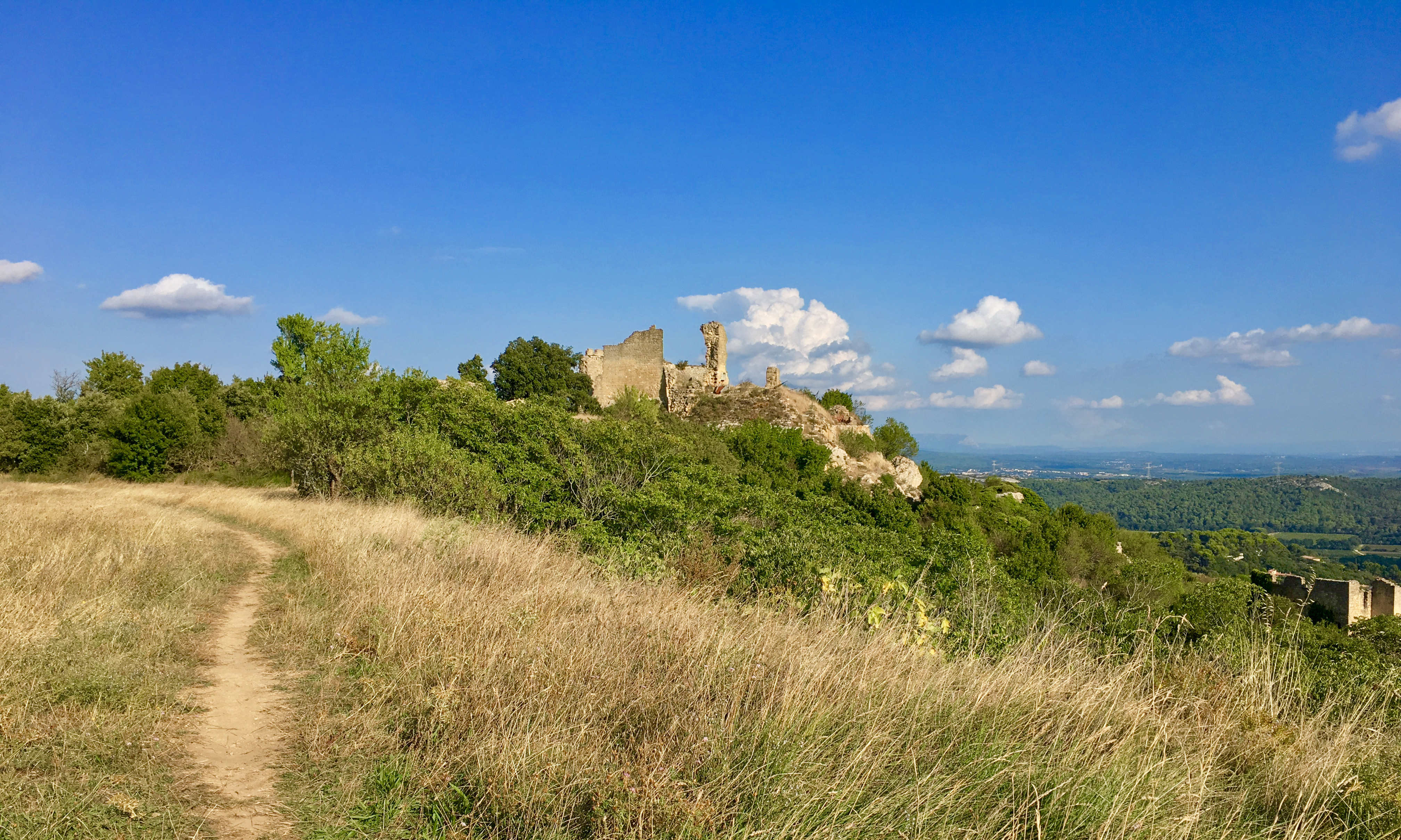
Calanques (1 hour from Salon-de-Provence)
The Calanques, outside of Marseille, are a must-see natural wonder. The Calanques are a series of rocky cliffs and bays between the city of Marseille and the town of Cassis, in the south of France. They’re essentially inlets that have been formed in the limestone cliffs, leaving behind a series of beautiful little bays. The word Calanques, comes from calanche in Corsican and calancas in Occitan, which means “inlet”. The area has a very specific eco-system (with no soil – the plants live in the limestone) and has been a protected area since 2012, when the entire 20 mile stretch of Calanques was designated a national park.
This text has been modified from the Culture Trip.
Hiking in the Camargue (around 45 min from Salon-de-Provence)
The Camargue is a natural region located south of Arles, France. Officially established as a regional park and nature reserve in 1970, the Parc Naturel Régional de Camargue covers 820 km². This territory is some of the most natural and most protected in all of Europe. A roadside museum provides background on flora, fauna, and the history of the area. There are many good walks and hikes through the Camargue, you can find some options here.
This text has been modified from Wikipedia.
Les Ochres de Roussillon (50 min from Salon-de-Provence)
The former ochre quarries have wonderful hiking trails and beautiful panoramic views. Sculpted by storms, these former ochre deposits present enchanting scenery. Perched on a hilltop, the village of Roussillon overlooks the first quarries carved over two centuries ago. Natural pigments from the ochre deposits have been used since prehistoric times. In 1780, Jean Etienne Astier discovered that ochre can be used to make a non-toxic dye and in the 19th century, the exploitation of ochre was industrialized. The pigment was used in the making of stucco for the Provençal houses, because it is heat and sun resistant. The development of synthetic dyes led to a decline in production in the early 20th century. The old ochre factory can still be visited today.
This text has been modified from the tourism website for Avignon and Provence.
Weather

We are keeping our fingers crossed for some nice weather! The weather during the day should be a warm and beautiful mid-80s. The weather at night will be a cool and in the low-60s. Remember that all the wedding events will take place on a hillside and so there will be a breeze. We recommend light jackets or shawls for evening events.

